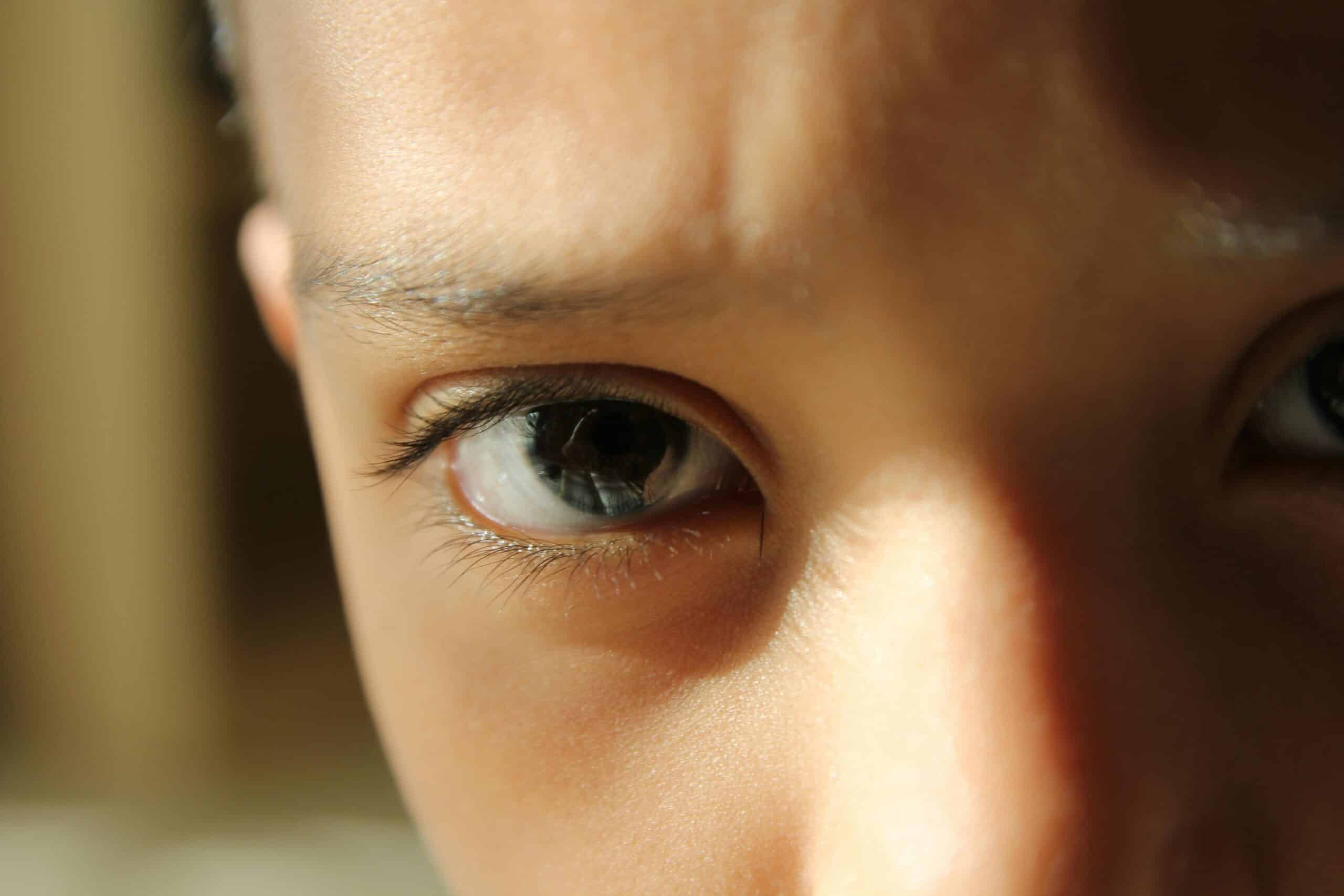In discussions about various health conditions and understanding the nuances of how conditions impact communication is crucial. Autism, a condition that affects brain development has an impact, on how people on the autism spectrum communicate. It’s important to understand how individuals with autism navigate interactions especially when it comes to things like making eye contact. The idea of the ‘Autistic Stare’ can often be misunderstood leading to misconceptions and communication breakdowns.
By exploring the science behind how people with autism look at others and considering how sensory processing plays a role we can better understand the perspectives of those with autism. It’s crucial to have strategies in place to support and encourage connections, within the autistic community for inclusivity and empowerment.
Understanding Autism and Social Interaction
Understanding autism and social interaction is essential, for establishing an environment for individuals on the autism spectrum. Autism Spectrum Disorder (ASD) affects communication resulting in variations in how people with autism interact with others.
This involves difficulties related to maintaining eye contact interpreting expressions and grasping cues and facial gestures. Autistic individuals may struggle with sustaining eye contact and understanding facial expressions, which can be misinterpreted by those who are not on the spectrum. Additionally the concept of theory of mind which involves comprehending others viewpoints can be impacted by autism affecting behavior and interactions.
Success Stories
“Move Up ABA has been a lifeline for our family. Before starting therapy, our son struggled with daily routines and communication. Now, he’s more independent and even initiated a conversation with a classmate for the first time! The progress we’ve seen in just six months is truly remarkable.”
- Emily R., Silver Spring, Accountant
“As a single dad, I was overwhelmed trying to manage my child’s behavior. The Move Up ABA team not only provided amazing support for my little girl but also taught me practical strategies to use at home. Their in-home sessions fit perfectly with our busy schedule. I’m so grateful for their patience and expertise.”
- Michael T., Rockville, Middle School Teacher
“We were hesitant about starting ABA therapy, but Move Up ABA’s approach put us at ease from day one. Our twins have made incredible strides in their social skills and self-regulation. The therapists are like extended family now, and we couldn’t be happier with our decision to work with them.”
- Aisha and James L., Simpson, Police Officers
Ready to start your child's journey to success? Schedule a free consultation today! 📞 Call (410) 497-8865.
Studies indicate that there are differences in activity linked to cognition in individuals with autism underscoring the distinct neurodevelopmental aspects of social disparities in this population.
By acknowledging these obstacles and recognizing the distinctions associated with autism we can foster empathy and acceptance for individuals facing developmental challenges within society at large. This includes appreciating the role of activity asynchronous neural activity in shaping the social disparities observed in individuals, with autism.
The Basics of Autism Spectrum Disorder (ASD)
Autism Spectrum Disorder (ASD) includes a range of conditions that involve difficulties, in skills, repetitive behaviors, speech and nonverbal communication. It’s a disorder that impacts how people perceive and interact with others.
Individuals with autism often experience differences in processing information resulting in ways of engaging socially. ASD is typically diagnosed according to the criteria outlined in the Diagnostic and Statistical Manual of Mental Disorders (DSM 5). People with ASD may struggle with understanding cues engage in behaviors and have intense interests in specific subjects.
Having a grasp of the fundamentals of ASD is essential for offering assistance and fostering environments for individuals, within the autism spectrum.
How Autism Affects Communication and Social Skills
Autism has an impact, on how individuals communicate and interact socially. People on the autism spectrum often find it challenging to understand cues and respond appropriately in situations.
This can show up as struggles with making eye contact interpreting expressions and engaging in social behaviors. Some discussions, like the Messi autism conversation, highlight how individuals may face these challenges while still excelling in their own unique ways
The neural aspects of autism also play a role in shaping communication skills. Studies show that individuals with autism display patterns of brain activity and process information differently from those who are neurotypical.
These differences can lead to difficulties in forming and maintaining relationships potentially resulting in isolation for individuals with autism. It is crucial to understand how autism affects communication and social skills to offer support and interventions for those, on the spectrum.
What Is the Autistic Stare?

What is an autistic gaze?
When someone with autism gazes, it may involve staring off into space or having moments of focus. There are also distinctions;
- Reduced Eye Contact: People with autism tend to engage in less eye contact during social interactions compared to those who are neurotypical.
- Atypical Gaze Patterns: Of looking into someones eyes they might focus on different parts of the face or body such as the mouth or other facial features.
- Difficulty Sustaining Eye Contact: Sustaining eye contact for extended periods may feel uncomfortable or difficult for some individuals with autism.
- Gaze Avoidance: Certain individuals may actively avoid making eye contact, which could be seen as a way to manage overload or social anxiety.
These patterns of gaze behavior can vary significantly among individuals with autism. Are not consistent, across the board.
Debunking Myths: The Reality of the ‘Autism Stare’
The concept of the ” stare” has often been. Mistakenly linked to negative assumptions and stereotypes. It is important to dispel these misconceptions and acknowledge the reality, behind the ” stare.”
Contrary to belief the “autistic stare” is not a display of intense eye contact or a disinterest in social interactions. Rather individuals with autism may face challenges with maintaining eye contact resulting in what may seem like eye contact or a unique form of engagement with others.
This behavior can be influenced by factors such as sensitivities, social misunderstandings or personal experiences. Recognizing the nature of the ” stare” is crucial for promoting understanding, inclusivity and respect for individuals, within the autism spectrum.
What People Often Misinterpret as the ‘Autism Stare’
The “autistic look” is often misunderstood, by others because of a lack of awareness and understanding. People might misinterpret the expression or intense gaze as signs of lack of involvement or even rudeness.
It’s crucial to understand that the intense gaze, in autism is not intentional but a reflection of the individuals neurodevelopmental traits. Autistic individuals may struggle to convey their emotions or engaging in social interactions in a way which can lead to misconceptions.
By educating ourselves about autism and the various ways individuals communicate we can prevent misunderstanding the ” stare”. Encourage greater understanding and acceptance.
Personal Accounts: What the ‘Stare’ Really Means
Insights shared by people, with autism offer perspectives on the concept of the ” stare.” Many individuals on the autism spectrum have described how this gaze reflects their way of processing information and grappling with theory of mind challenges.
Theory of mind involves the capacity to comprehend and attribute states to oneself and others. For individuals deciphering and responding to cues can be challenging, leading to behaviors such as prolonged staring or avoiding eye contact.
It is crucial to listen to the stories of those, with autism in order to gain a deeper understanding of their viewpoints and requirements.
The Science Behind Gaze Patterns in Autism
Studying how people, with autism look at things has given us insights into the brain connections and thinking abilities related to making eye contact. Studies have found that individuals with autism might show differences in how they look at things compared to those without the condition.
They may tend to stare at something for a time like focusing on objects or patterns and they could react more strongly to someone looking down rather than making direct eye contact. By understanding these ways of looking, such as preferring gazes over eye contact and how they recognize faces we can learn more about the special ways people, with autism think and perceive things.
Differences in Eye Contact Among Autistic Individuals
There are variations, in eye contact behavior among individuals with autism indicating the social tendencies within the autism spectrum. While some people with autism may choose not to make eye contact others might engage in short or occasional instances of eye contact.
These disparities can be linked to differences in abilities sensitivities to sensory stimuli and personal choices such as alexithymia and its influence on eye contact. Studies suggest that regardless of autism, alexithymia seems to contribute to avoiding making eye contact with others.
It is crucial to acknowledge and honor these distinctions since making eye contact is not always a sign of interaction or communication for people with autism. By recognizing and accommodating these diversities we can create environments that cater to the social requirements and preferences of individuals, on the autism spectrum.
Sensory Processing and the Autistic Experience
Sensory processing plays a role, in the experience, including the phenomenon known as the “autistic stare.” Many individuals with autism have sensitivities or differences in how they process information, which can sometimes lead to feeling overwhelmed in situations.
When someone experiences overload it means their senses are flooded with much intense stimuli. This overload can trigger reactions, such as the ” stare,” which individuals may use as a way to manage or deal with the overwhelming sensory input.
Having an understanding of processing and how sensory overload affects individuals is essential for creating supportive environments for those, on the autism spectrum.
How Sensory Processing Affects Gaze and Attention

Sensory processing challenges are a factor, in the occurrence of what’s commonly known as the “autistic stare.” For individuals with autism dealing with input can be overwhelming making it hard to process and make sense of what they’re experiencing. This overload of information can lead to a state where the person feels bombarded by everything around them.
When someone with autism is overwhelmed by input their gaze and focus might change. The autistic stare often happens during these times when the person seems to withdraw their attention and gaze off into space.
It’s essential to understand that the autistic stare isn’t about avoiding eye contact on purpose. Instead it reflects how their brain processes information and social cues differently. Recognizing how sensory processing affects gaze and attention is crucial in supporting individuals with autism. This aspect should be considered first when discussing the differences in interaction seen in autistic individuals.
Whether its struggling with making eye contact or staring much an individuals sensory processing significantly influences their gaze and attention. This serves as an example of the reciprocity challenges present in interactions between nonautistic individuals. It underscores the importance of acknowledging and accommodating these differences, in exchanges.
Social Misunderstandings and the Autistic Community
The distant gaze of individuals, with autism is often misinterpreted by society leading to misunderstandings and unfair labeling. Many people mistake this gaze as a lack of interest or social detachment not realizing that it stems from the traits of those with autism.
This misinterpretation can have effects on individuals within the autism community. People with autism may be unfairly judged, left out or even subjected to bullying because of their behaviors, including the distant gaze. These misconceptions can further alienate them. Impede their growth and integration.
To combat these misunderstandings it is essential to increase awareness and understanding of autism and the distant gaze phenomenon. Through education and advocacy initiatives we can debunk myths, challenge stereotypes. Promote acceptance and integration of individuals with autism. By fostering attitudes and behaviors in society we can build an inclusive and supportive environment for those, in the autistic community.
Strategies for Supporting Autistic Individuals
Supporting individuals, with autism requires an approach that considers their requirements and difficulties. Below are some strategies that can aid in nurturing their growth and overall well being:
- Provide social support: It is essential to establish an environment where individuals with autism feel acknowledged and embraced. Providing adjustments like sensory spaces, visual aids and clear communication techniques can contribute to this.
- Encourage positive social interactions: Promoting and facilitating engagements can assist individuals with autism in developing social skills and enhancing their social drive. This may involve organized events, group therapy sessions and programs for improving abilities.
- Promote social skills: Educating and reinforcing skills plays a role in the social advancement of individuals with autism. Techniques such as using narratives engaging in role playing exercises and offering guidance on recognizing social cues and appropriate behaviors are crucial.
- Provide educational support: Effective collaboration among educators, therapists and families is key to delivering support for individuals with autism. Tailored education plans (IEPs) can be devised to target the objectives and needs of each individual.
- Involve families and friends: Engaging family members and friends in supporting individuals with autism can promote their development. Educating these relationships, about the condition and offering resources can enhance their understanding of how to support their loved ones
By putting these approaches into action we can establish a welcoming and encouraging atmosphere, for people, with autism helping them to excel socially and enjoy experiences.
Encouraging Positive Social Interactions
It is crucial to support interactions, for the social growth and happiness of individuals with autism. Here are some effective ways to encourage interactions:
- Create structured social opportunities: Offering structured social opportunities like group activities or clubs can help individuals with autism feel more at ease and self assured in social situations. These organized settings can establish expectations and guidelines for socializing.
- Focus on social motivation: Recognizing and catering to the motivations of individuals with autism is key. Identifying their passions and strengths can lead to connections and a sense of belonging.
- Teach social skills: Teaching and reinforcing skills is vital for improving interactions. This may involve educating on cues, nonverbal communication and problem solving techniques.
- Promote shared interests: Encouraging individuals with autism to participate in activities that align with their interests can create chances for engagement. Shared interests can serve as a foundation for forming relationships and friendships.
By employing these approaches we can cultivate an environment that encourages interactions for individuals, with autism boosting their social abilities and overall well being.
Tips for Families, Friends, and Educators
To help individuals, in their growth it’s important for families, friends and educators to work together. Here are some suggestions for assisting individuals;
- Learn about autism: Learn about autism spectrum disorder and the unique social hurdles faced by those with autism. Knowing their needs and differences can help you offer support.
- Encourage social opportunities: Arrange opportunities for engagement and inclusion for individuals. This may involve setting up playdates joining groups or taking part in community events.
- Provide clear communication: Use simple language when communicating with autistic individuals. Utilize aids like schedules or stories to aid comprehension.
- Collaborate with educators: Collaborate with educators to create customized education plans that target the goals and requirements of individuals. Provide input. Maintain communication, for consistent support.
- Involve the family: Connect with the families of individuals. Involve them in the social support process. Understanding their viewpoints and including them in decision making can lead to outcomes.
By following these suggestions, families, friends and educators can establish a nurturing environment that promotes the growth and well being of individuals.
Conclusion
In summary it is important to grasp the complexities of autism and social interactions to debunk misconceptions and cultivate empathy. The phenomenon known as the ‘Autism Stare’ sheds light, on processing and sensory experiences. By encouraging engagements and offering customized support we can promote inclusivity and understanding within the autistic community.
Educating ourselves about gaze patterns and sensory processing in autism is vital for establishing an accommodating environment for individuals on the spectrum. Lets embrace diversity and cherish the range of experiences.
Is your child prone to eye contact that may be misunderstood as staring? Consider Move Up ABAs in home therapy services! Our skilled therapists engage children in their surroundings catering to their communication styles and addressing social interaction challenges effectively.
We design tailored ABA programs to enhance communication abilities enabling your child to build relationships. Explore MoveUp ABA approach to autism therapy, on our website.
Frequently Asked Questions
Is staring a form of autism?
Staring is often linked to autism arising from variations, in interaction and sensory perception. It doesn’t necessarily signal rudeness; instead it reflects the persons approach to information processing. Recognizing this is key to providing support for individuals, with autism.
Why do kids with autism stare?
Kids, with autism might gaze for reasons such as managing their emotions dealing with overwhelm and facing difficulties, in social interactions.







